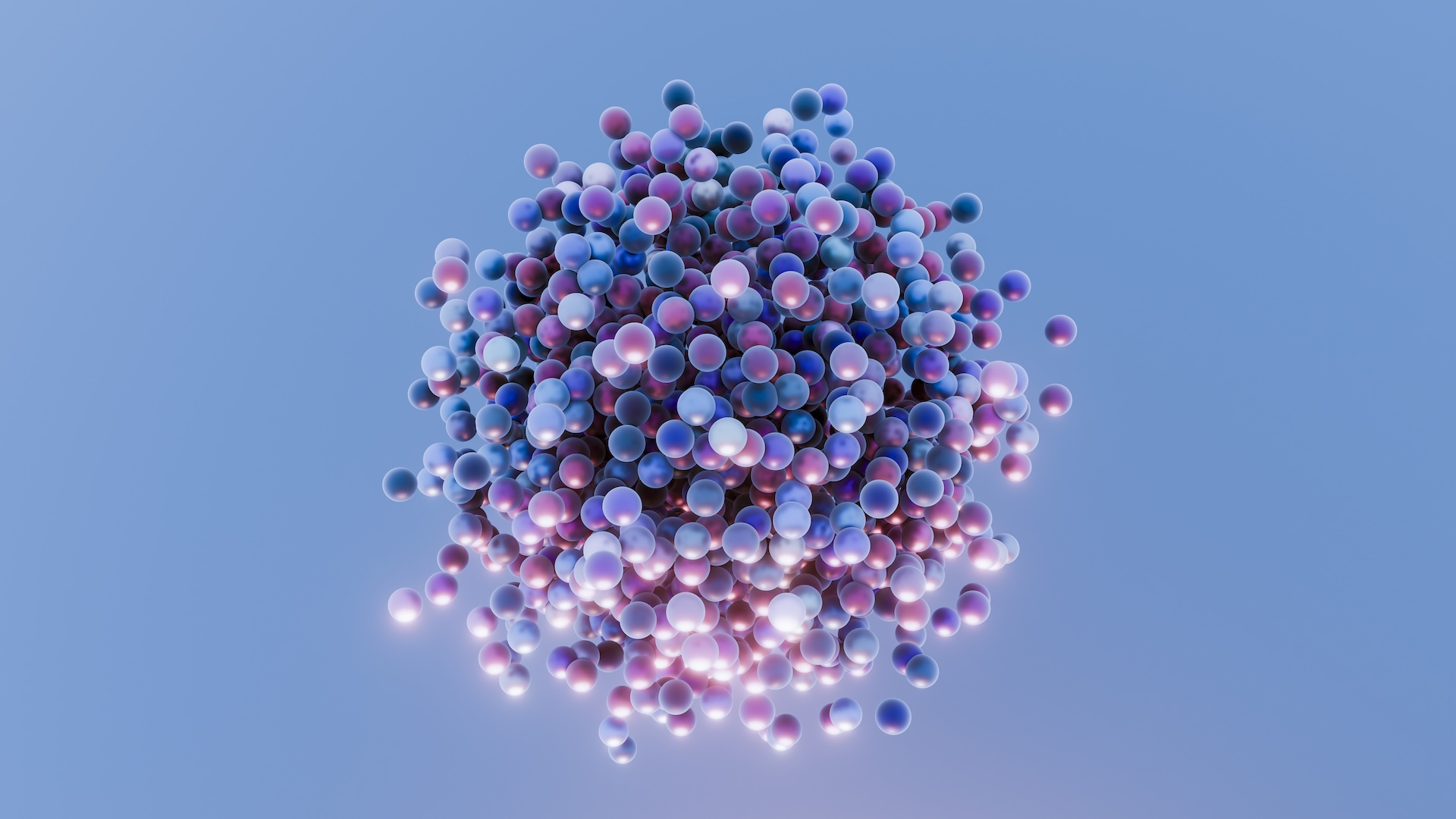By Victoria Atkinson
Copyright livescience

Skip to main content
Close main menu
Live Science
Sign up to our newsletter
View Profile
Search Live Science
Planet Earth
Archaeology
Physics & Math
Human Behavior
Science news
Life’s Little Mysteries
Science quizzes
Newsletters
Story archive
Skyscraper-sized asteroid flyby
Diagnostic dilemma
Elusive ‘grumpy’ cat photographed
Anthropologist Ella Al-Shamahi on human origins
How misinformation spreads
Don’t miss these
Physics & Mathematics
Where do atoms come from? A physicist explains.
Particle Physics
Why does the universe exist?
Can other metals be turned into gold?
Quantum Physics
‘Paraparticles’ would be a third kingdom of quantum particle
Scientists heat gold to 14 times its melting point — without turning it into a liquid
Scientists find ‘something extraordinary’ in famous supernova’s troubled heart
Nuclear Energy
‘This technology is possible today’: Nuclear waste could be future power source and increase access to a rare fuel
Physics & Mathematics
Meet the ‘neglectons’: Previously overlooked particles that could revolutionize quantum computing
Scientists just recreated the universe’s first ever molecules — and the results challenge our understanding of the early cosmos
The hunt for ‘Planet Nine’: Why there could still be something massive at the edge of the solar system
Scientists discover fast-spinning ‘unicorn’ object that defies physics
‘Ice cube’ clouds discovered at the galaxy’s center shouldn’t exist — and they hint at a recent black hole explosion
Black Holes
Scientists use Stephen Hawking theory to propose ‘black hole morsels’ — strange, compact objects that could reveal new physics
Mathematics
Mathematicians discover a completely new way to find prime numbers
Scientists achieve ‘magic state’ quantum computing breakthrough 20 years in the making
Physics & Mathematics
Particle Physics
What are the ‘magic numbers’ in nuclear physics, and why are they so powerful?
Victoria Atkinson
17 September 2025
Why do some elements decay in minutes, while others last billions of years? Certain “magic numbers” of nuclear particles may make all the difference.
When you purchase through links on our site, we may earn an affiliate commission. Here’s how it works.
An abstract illustration of a radioactive atom losing particles. In nature, some atoms are inherently more stable than others, thanks to certain “magic numbers” of nuclear particles.
(Image credit: aire images via Getty Images)
Some atoms are stable, while others seem to fall apart. Lead-208 will probably last forever, while the synthetic isotope technetium-99 exists for just hours. The difference lies in the structure of the atom’s nucleus, with certain “magic numbers” of nuclear particles making some isotopes especially resistant to radioactive decay.
So what are these magic numbers, and why are they so special?
The stability of atomic nuclei varies wildly with the number of nuclear particles they contain. Some, like lead-208 and calcium-40, have been around since Earth first formed. Known as primordial isotopes, they will likely survive until the end of time. Others, like oganesson-294 and tennessine-294, are lost to radioactive decay in an instant, with fleeting half-lives of just 0.89 and 0.80 milliseconds, respectively.
You may like
Where do atoms come from? A physicist explains.
Why does the universe exist?
Can other metals be turned into gold?
This stability seems partly connected to the mass of the atom, with heavier elements proving less stable. But in the 1940s and ’50s, scientists observed that many of the lighter elements also had radioactive isotopes; both carbon-14 and potassium-40 undergo radioactive decay slowly and are responsible for much of the planet’s background radiation.
Intriguingly, these scientists noticed that very particular numbers of protons and neutrons appeared to result in unusually stable nuclei, and these values became known as magic numbers.
“The magic numbers are 2, 8, 20, 28, 50, 82 and 126,” said David Jenkins, a nuclear physicist at the University of York in the U.K. “If you take the lightest one — two protons and two neutrons — that’s the nucleus of the helium atom, and we know that’s a very stable combination of protons and neutrons.”
Related: Why isn’t an atom’s nucleus round?
Sign up for the Live Science daily newsletter now
Get the world’s most fascinating discoveries delivered straight to your inbox.
Contact me with news and offers from other Future brandsReceive email from us on behalf of our trusted partners or sponsorsBy submitting your information you agree to the Terms & Conditions and Privacy Policy and are aged 16 or over.
Helium nuclei, also known as alpha particles, are spontaneously emitted from heavier, unstable atoms as they undergo nuclear decay.
“If you think about it, that’s very weird,” Jenkins said. “If an atom is going to decay, why doesn’t it lose protons or neutrons one at a time? The reason is that the alpha particle is very very stable, and that’s related to this idea of magic numbers.”
Other magic nuclei include oxygen-16 (eight protons and eight neutrons), calcium-40 (20 protons and 20 neutrons) and lead-208 (82 protons and 126 neutrons), the heaviest stable element known.
You may like
Where do atoms come from? A physicist explains.
Why does the universe exist?
Can other metals be turned into gold?
To understand these bizarre observations, physicists proposed the “nuclear shell model,” which draws parallels with the electronic shells used to explain the chemical behavior of atoms.
“The idea was that protons and neutrons sit in shells, a bit like the electrons in an atom, and nuclear excitations would involve protons and neutrons jumping up and down between those shells,” Jenkins explained.
Like their electron analogues, these nuclear shells have fixed energy values known as quantized states, and the system is most stable when these shells are completely filled. The exact reasoning behind this is a complex combination of quantum mechanical factors, but it’s thought that the strong force — the fundamental interaction that holds the protons and neutrons together in the nucleus — is higher than expected per particle in completed shells.
Magic numbers are therefore simply the numbers of particles required to fill each of these nuclear shells, with separate levels for protons and neutrons. Individual isotopes can correspondingly be singly magic, with a magic number of either protons or neutrons (for example, the primordial isotope iron-56), or doubly magic, with magic numbers of both protons and neutrons (like oxygen-16 and lead-208).
These doubly magic systems are few and far between, but they possess some intriguing quantum properties, Jenkins said.
RELATED STORIES
—Do atoms ever touch?
—Where do electrons get energy to spin around an atom’s nucleus?
—Why can’t we walk through walls if atoms are mostly empty space?
“The doubly magic systems have a spherical distribution of matter and charge” — a completely round nucleus, he said. “Most nuclei are deformed and rotate. They have a very different structure.”
No one knows how far this model will stretch. Tin-100 — the heaviest doubly magic nucleus, with 50 protons and 50 neutrons — has a half-life of just 1.2 seconds, while unbihexium, the next magic element after lead, has never been synthesized. Therefore, whether this magic stability boost will be enough to allow scientists to add an eighth row to the periodic table remains an open question.
Periodic table of elements quiz: How many elements can you name in 10 minutes?
Victoria Atkinson
Social Links Navigation
Live Science Contributor
Victoria Atkinson is a freelance science journalist, specializing in chemistry and its interface with the natural and human-made worlds. Currently based in York (UK), she formerly worked as a science content developer at the University of Oxford, and later as a member of the Chemistry World editorial team. Since becoming a freelancer, Victoria has expanded her focus to explore topics from across the sciences and has also worked with Chemistry Review, Neon Squid Publishing and the Open University, amongst others. She has a DPhil in organic chemistry from the University of Oxford.
You must confirm your public display name before commenting
Please logout and then login again, you will then be prompted to enter your display name.
Where do atoms come from? A physicist explains.
Why does the universe exist?
Can other metals be turned into gold?
‘Paraparticles’ would be a third kingdom of quantum particle
Scientists heat gold to 14 times its melting point — without turning it into a liquid
Scientists find ‘something extraordinary’ in famous supernova’s troubled heart
Latest in Particle Physics
Why does the universe exist?
Scientists watch a single electron move during a chemical reaction for first time ever
‘A bundle of microscopic tornadoes’ may be building the cosmic web
Bizarre radio signals that defy physics detected under Antarctica
Physicists force atoms into state of quantum ‘hyper-entanglement’ using tweezers made of laser light
Particle physics: Facts about the elementary particles that make up our universe
Latest in Features
What are the ‘magic numbers’ in nuclear physics?
A tragic gene therapy death that stalled the field for a decade — Sept. 17, 1999
Science history: Gravitational waves detected, proving Einstein right — Sept. 14, 2015
Volcanic ‘googly eyes’ stare into space from skull-like peninsula
James Webb telescope’s ‘starlit mountaintop’ could be the observatory’s best image yet — Space photo of the week
Where is Queen Boudica buried?
LATEST ARTICLES
Genetics: How do we inherit traits from our ancestors?
Even brief exposure to air pollution can push the placenta into an inflammatory state, lab study suggests
‘Rare’ ancestor reveals how huge flightless birds made it to faraway lands
Oldest-known dome-headed dinosaur discovered sticking out of a cliff in Mongolia’s Gobi Desert
Scientists invent new sunscreen made from pollen
Live Science is part of Future US Inc, an international media group and leading digital publisher. Visit our corporate site.
Contact Future’s experts
Terms and conditions
Privacy policy
Cookies policy
Accessibility Statement
Advertise with us
Web notifications
Editorial standards
How to pitch a story to us
Future US, Inc. Full 7th Floor, 130 West 42nd Street,
Please login or signup to comment
Please wait…



